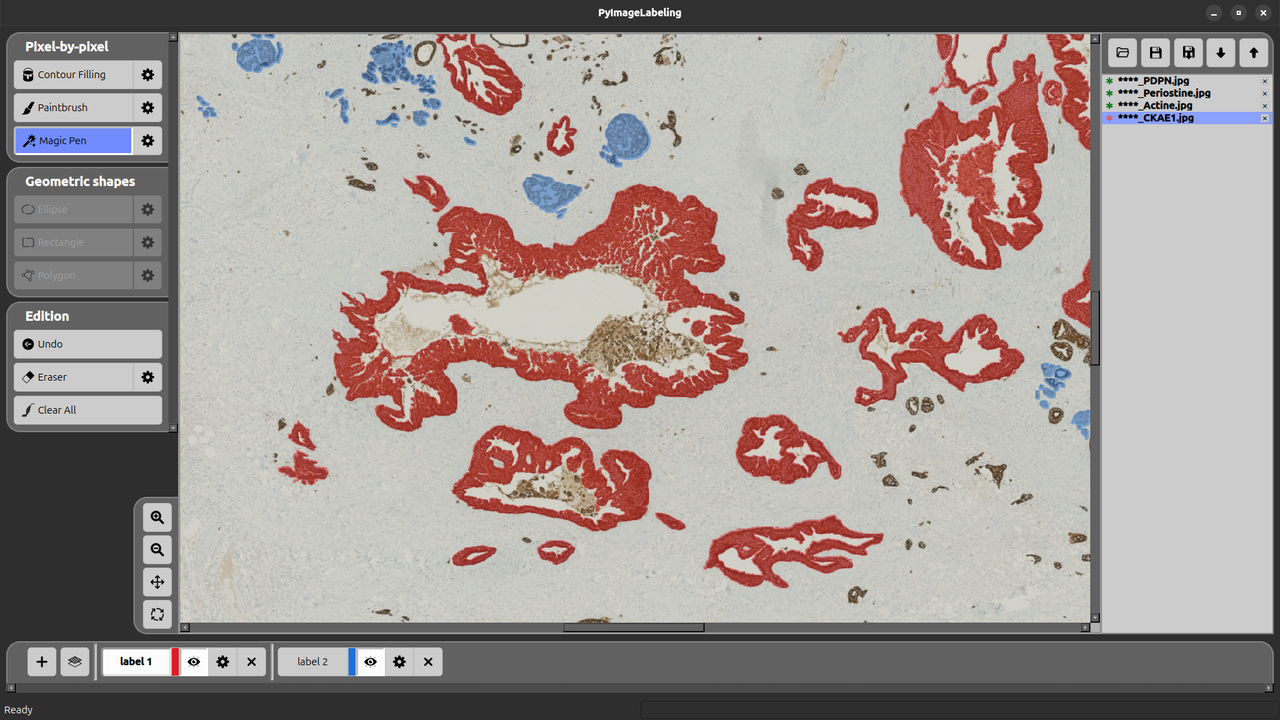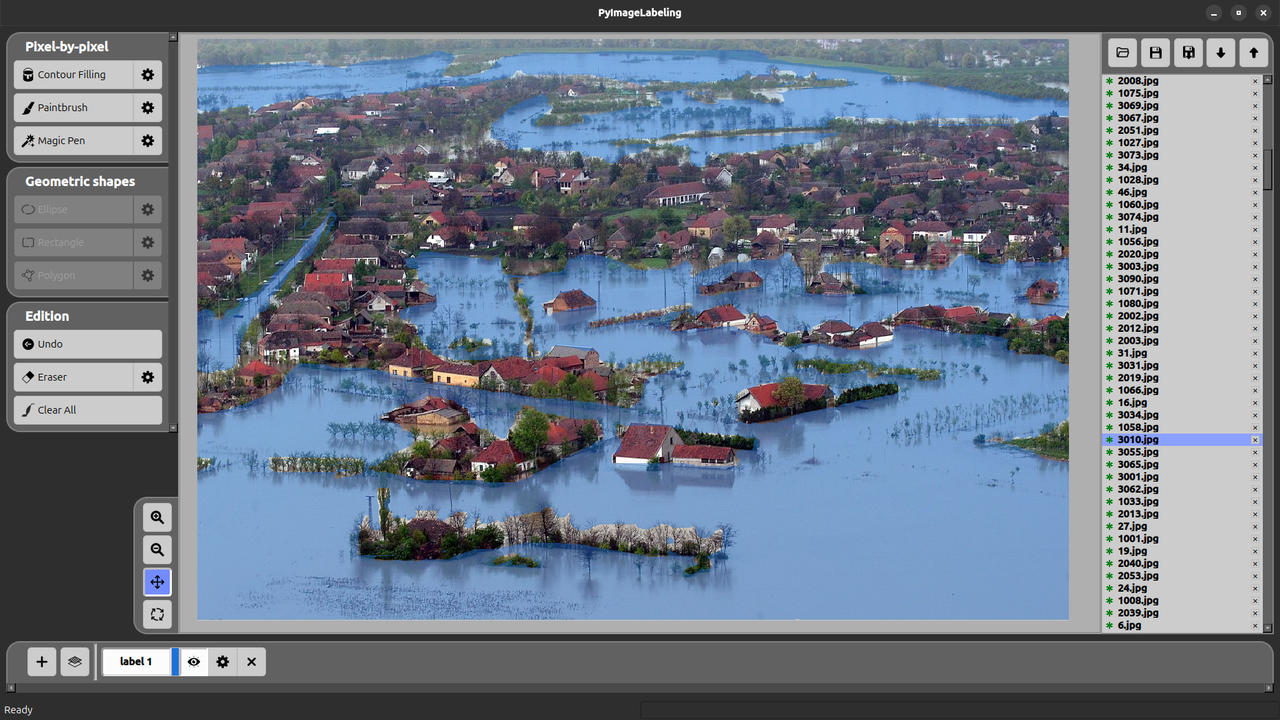- GitHub Repository: View codesource.
- PyPI: Install via pip.
PyImageLabeling is a powerful tool with a user-friendly interface based on PyQT6 for creating image masks. These labeled images are used in the creation of machine learning models dedicated to computer vision tasks.
Two types of labeling are available:
- Pixel-by-Pixel: allows to use the pixel-level precision (paintbrush, magic pen, contour filling).
- Geometric shapes: allows to use different geometric shapes (polygon, rectangle, ellipse) for labeling (not yet available, under development).
Note that you need first Python 3 (version 3.12, or later) to be installed. You can do it, for example, from Python.org.
Check whether you have the last version of PyPi:
python3 -m pip install -U pipInstall PyImageLabeling:
python3 -m pip install -U PyImageLabelingTo launch PyImageLabeling:
python3 -m PyImageLabelingYou can download the Windows executable. Just double-click on the executable file to launch PyImageLabeling.
Here is an illustration for Linux. We assume that Python 3 is installed, and consequently ‘pip3’ is also installed. In a console, type:
git clone https://github.com/crillab/PyImageLabeling.gitYou may need to update the environment variable ‘PYTHONPATH’, by typing for example:
export PYTHONPATH="${PYTHONPATH}:${PWD}/.."Get the last version of pip:
python3 -m pip install --upgrade pipExecutes the pyproject.toml inside the PyImageLabeling directory and installs dependencies ("numpy", "pyqt6", "opencv-python", "pillow", "matplotlib").
python3 -m pip install -e .To launch PyImageLabeling:
python3 -m PyImageLabelingPyImageLabeling considers that you have two working directories (which may be the same):
- The working directory containing your images to be labeled.
- The saving directory containing your labeled images and a JSON file.
The saving directory consists of:
- The labeled PNG files: each label of each image is represented by a labeled PNG file.
- The JSON file contains several information about labels: identifier, name, color and type.
| Tool | Functionality |
|---|---|
| Load | Load images and/or labeled images from a working or saving directory |
| Save | Save current labeled images in a saving directory |
| Next | Select the next image |
| Previous | Select the previous image |
| Movement | Function |
|---|---|
| Zoom in | Click to zoom in (up mouse wheel shorcut) |
| Zoom out | Click to zoom out (down mouse wheel shorcut) |
| Move | Click and drag to move the current (wheel mouse click shorcut) |
| Reset | Reset to default view (zoom and position) |
| Tool | Functionality |
|---|---|
| Add Label | Add a new label (by chosing the name, the type and the color of the new label) |
| Label Opacity | Adjust the transparency of the labeled layers. |
Moreover, for each label, you can set some parameters:
| Tool | Functionality |
|---|---|
| Color | Set the color of the selected label |
| Visibility | Set the visibilty of the selected label |
| Setting | Set the parameters of the selected label |
| Remove | Remove the selected label (warning: delete all saving files containing this label) |
| Tool | Pixel-by-pixel |
|---|---|
| Contour Filling | Shape detection: click inside a detected shape to fill with the label (tolerance in parameter) |
| Paintbrush | Paint with the selected label (Paintbrush size in parameter) |
| Magic Pen | Intelligent fill tool based on color similarity (tolerance, pixel limit and method in paramter) |
| Tool | Geometric shapes (Not yet available: under development) |
|---|---|
| Ellipse | Precision ellipse selection for label assignment |
| Rectangle | Precision rectangular selection for label assignment |
| Polygon | Precision polygon selection for label assignment |
Each editing tools is proper to each selected label.
| Tool | Functionality |
|---|---|
| Undo | Revert the last action with full history support |
| Eraser | Brush that erases the selected label (Eraser brush size and "all labels" mode in parameter) |
| Clear All | Clear all label areas. |
This project is licensed under the MIT License - see the LICENSE file for details.
- Computer Vision: Create training datasets for object detection and segmentation
- Medical Imaging: Annotate medical scans and diagnostic images
- Autonomous Vehicles: Label road scenes and traffic elements
- Agriculture: Mark crop areas and plant health indicators
- Quality Control: Identify defects and areas of interest in industrial applications




